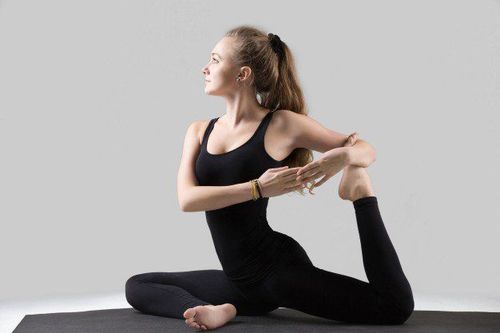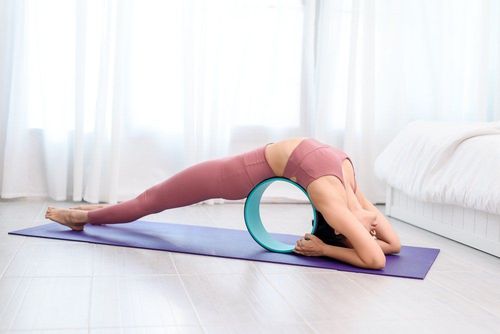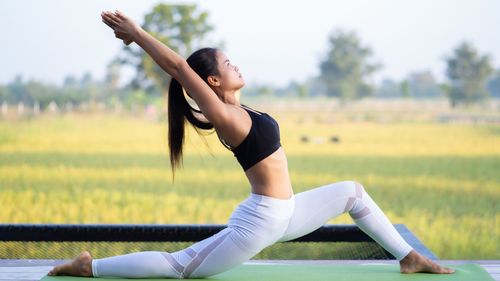This is an automatically translated article.
Meditation is an age-old mental and physical practice used to increase physical calm and relaxation, improve psychological balance, cope with illness, and promote wellness. overall and happy. Mind and body practice focuses on interactions between brain, mind, body, and behavior. Here are 9 types of meditation you should know and choose for yourself which type is most suitable.1. What is meditation?
Meditation may be an ancient tradition, but it is still practiced in modern cultures all over the world to induce a sense of inner calm and harmony in people. Although the practice of meditation is linked to various religious teachings, meditation is not related to faith but is more about changing consciousness, regaining awareness, and achieving a state of peace. Today, with the need to relieve stress between busy schedules and more demanding hectic lives, meditation is growing in popularity.While there is no right or wrong way to meditate, it is important for us to find a practice that meets our needs and complements our own personality. There are nine common types of meditation practice:
Mindfulness meditation Spiritual meditation Concentration meditation Movement meditation Mantra meditation Transcendental meditation Progressive relaxation Mindfulness meditation Visual meditation Not all styles of meditation are suitable be with everyone. These practices require different skills and mindsets. And our task is to find out whether the right kind of meditation can be applied.
Mira Dessy, a meditation practitioner and holistic nutritionist, says, “It's comforting and it's what makes you feel motivated and makes you want to practice more.”
A new report based on data from the 2017 National Health Interview Survey (NHIS) shows that US adult use of meditation in the past 12 months tripled from 2012 to 2017 (from 4.1% to 14.2%). The use of meditation by children in the United States (ages 4 to 17) also increased significantly (from 0.6% in 2012 to 5.4% in 2017).
Although there are many types of meditation, most of them have 4 elements in common: a quiet location with as few distractions as possible; a particular, comfortable position (sitting, lying down, walking or in other positions); intense concentration (a specially chosen word or set of words, an object, or the sensation of the breath) and an open mind (letting distractions come and go spontaneously without judgment). review them).

Thiền là một phương pháp luyện tập rèn luyện sự tập trung mang lại lợi ích về sức khỏe và tinh thần
2. 9 popular types of meditation
2.1. Mindfulness meditation
Mindfulness meditation is rooted in Buddhist teachings and is one of the most popular meditation techniques in the West. In mindfulness meditation, the meditator needs to pay attention to his thoughts as they pass through his mind. The meditator must not judge those thoughts or participate in them, but simply observe and record his or her feelings about those thoughts.Mindfulness meditation is a combination of concentration and awareness. Participants may find it helpful to focus on an object or their breath while observing any bodily sensations or thoughts.
This type of meditation is suitable for those without a teacher because it can be done alone easily.
2.2. Spiritual meditation
Spiritual meditation is used mainly in the religions of Eastern countries, such as Hinduism, Taoism, and in the Christian faith. Spiritual meditation is similar to prayer in that we need to reflect on the silence around us and seek a deeper connection with God or the Universe. Aromatic oils are also commonly used to enhance spiritual experiences. Commonly used essential oils include:Frankincense Sage Cedar Sandalwood Palo santo Spiritual meditation can be practiced at home or in places of worship. The practice of meditative spirituality is beneficial for those who love tranquility and seek spiritual growth.
2.3. Concentrate meditation
Concentration meditation is a form of asking participants to focus on using any of their five senses. For example, we can focus on something internal, like the breath, or we can also take advantage of external influences to help focus our attention. Try counting mala beads, listening to the sound of gongs, or gazing at candle flames.Concentration meditation can be simple in theory, but can be difficult for beginners to concentrate for longer than a few minutes. If the meditator gets distracted, it is important to return to practice and refocus. As the name suggests, concentration meditation is ideal for anyone who needs more focus in their life.
2.4. Movement Meditation
Although most people think of yoga when they hear movement meditation, this type of meditation can include activities such as walking through the woods, gardening, qigong, and other forms of gentle movement. . It is an active form of meditation where our movements are the essence of the exercise.Movement meditation is great for people who find peace in their actions and like to let their mind wander.
2.5. Mantra meditation
Mantra meditation or Mantra meditation is a form of meditation prominent in many teachings, including both the Hindu and Buddhist traditions. This type of meditation uses repetitive sounds to clear the mind. It can be a word, phrase or sound, such as the word "Om". It doesn't matter whether the sound is played loud or low. After doing mantra meditation for a while, you will be more alert and more attuned to your surroundings. This allows you to experience a deeper level of awareness.Some people prefer mantra meditation because they find it easier to focus on a word than on the breath. This is also a good method for people who don't like silence and like repetitive activities.
2.6. Transcendental Meditation
Transcendental Meditation is a relatively common type of meditation. Even this type of meditation has been the subject of much research in the scientific community. It is more customizable than mantra meditation, using a word, phrase, or series of words specific to each practitioner.Transcendental meditation is usually for those who like structure and are serious about maintaining a meditative practice.
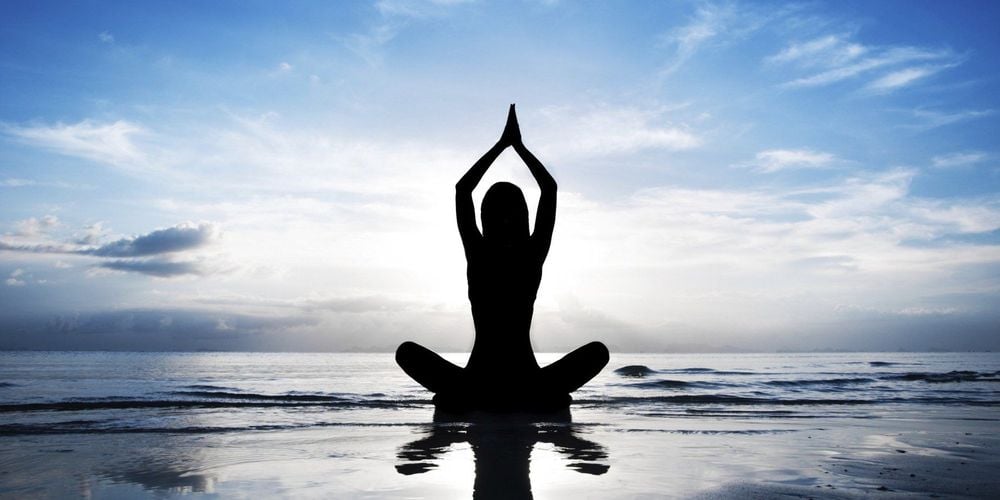
Thiền ăn làm cho bữa ăn có có nghi lễ tâm linh giúp thanh lọc cơ thể con người
2.7. Progressive relaxation
Progressive relaxation also known as full-body scanning meditation is a meditative practice that reduces stress in the body and promotes relaxation. Typically, this form of meditation requires the practitioner to slowly tighten and relax each muscle group at a time throughout the body.In some cases, it can also encourage the meditator to imagine a gentle wave flowing through the body to help release any tension.
This form of meditation is often used to relieve stress and relax before going to bed.
2.8. Compassion meditation
Compassion meditation also known as loving-kindness meditation is used to strengthen feelings of compassion, kindness, and acceptance towards self and others. This type of meditation usually involves opening the mind to receive love from others and then sending a series of well wishes to loved ones, friends, acquaintances and all sentient beings.Since this type of meditation is aimed at promoting compassion and kindness, it may be ideal for those who are experiencing excessive negative emotions or resentment.
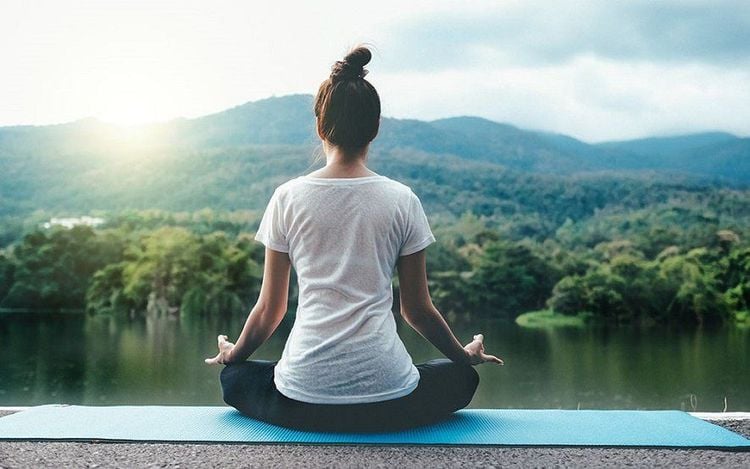
Thiền từ bi nhằm khơi dậy lòng từ bi và lòng tốt cho con người
2.9. Contemplation meditation
Visualization or visualization is a meditation technique that focuses on enhancing feelings of relaxation, peace, and tranquility by visualizing bright, positive scenes or images. With this meditation, it is important to imagine a vivid scene and use all five senses to enjoy the scene as much as possible. Another form of visualization meditation involves imagining yourself succeeding with specific goals, intended to increase focus and motivation.Many people use visualization meditation to improve their mood, reduce stress levels and promote inner peace.
How to start meditation?
The simplest way to start meditation is to sit quietly and focus on your breath. An old saying suggests to meditators: “You should meditate for 20 minutes a day—unless you are too busy. Then you should sit for an hour.”
All jokes aside, it's best to start in short periods of time, even just 5 or 10 minutes, and grow from there. “Do regular meditation for 20 minutes a day and do this for 100 days straight,” recommends Pedram Shojai, author of “The Urban Monk” and founder of Well.org. “Combine that with an extra two to five minutes of meditation during the day to break through the chaos and you'll soon feel the benefits.”
Proven benefits of meditation
There is much evidence to support the benefits of meditation. Meditation can help:
Lower blood pressure Reduce anxiety Reduce pain Reduce symptoms of depression Improve sleep Whether those benefits are hyped about meditation or scientifically proven, these People who practice meditation daily are convinced of the life benefits of regular meditation.
Whether we are looking to reduce stress or seek spiritual enlightenment, or find stillness or lightness in our movements, there is a meditation method for you. Don't be afraid to try different types of meditation to find the one that works best for you. Meditation is not a must. If we force our body, it becomes something that makes us feel uncomfortable. Gentle, regular practice will eventually become sustainable and enjoyable.
Please dial HOTLINE for more information or register for an appointment HERE. Download MyVinmec app to make appointments faster and to manage your bookings easily.
Reference source: healthline.com



